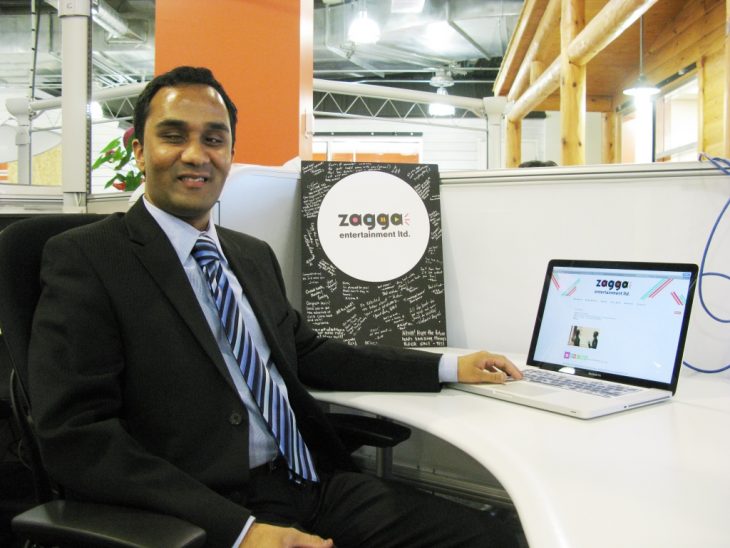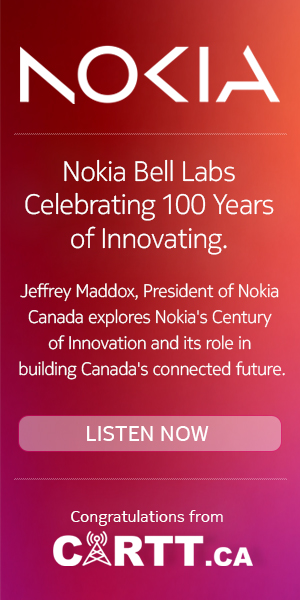
TORONTO – With the prevalence of video on demand and services like Netflix, many of us take for granted just how easy it is to find exactly the kind of movie or other programming you want to watch. For those living with vision loss, however, accessing described video content through a streaming or VOD service has been next to impossible.
Until now. Toronto businessman Kevin Shaw (pictured) has developed a unique streaming solution where those who are visually impaired or have vision loss can enjoy popular movies and TV shows, dubbed with described video, for a monthly subscription.
Zagga Entertainment, the brainchild of Shaw (who lost his own sight at 19), is a VOD service that aggregates described video content and allows users to stream described content on their computers or mobile devices. Users can log in to the zagga.tv website or download the mobile app, which are both accessible using a screen reader and other assistive technology, to access described video convent.
Shaw says his service solves two major problems: inaccessible technology and a lack of described content. While the OTT technological revolution has enabled millions to access movies and television on smart TVs, tablets, the web and game consoles, it has largely forgotten the millions who are visually impaired. “Other VOD sites, like Netflix, feature interfaces that are difficult for a person with vision loss to navigate with a screen reader. Playback controls are often invisible and many visual cues don’t translate to speech software,” he says.
“When I’m on Netflix, for example, it codes the front end of their website in such a way that the screen reader doesn’t know where to find the play button or fast forward button, or there are elements on the screen that can’t be detected by the screen reader. I don’t hear anything at all, or it comes out as garbled numbers and letters.”
Zagga Entertainment’s platform, which incorporates HTML5, also adheres to online accessibility standards that makes it compatible for users with screen readers, as well as “low-vision” users who may require a larger font size or other on-screen adjustments. Currently, there is no over-the-top service that aggregates described video content, says Shaw. “That’s what we are creating, with a fixed cost subscription model where folks can subscribe and get access to described video content on an accessible website.”
Shaw’s idea of a Netflix-type service for the blind grew out of his own frustration over not being able to find an accessible platform to watch some of his DVDs. He had many which had never been opened because he knew his screen reader would not be able to navigate the DVD menu. While cable TV offered some described video content, Shaw couldn’t find any descriptive content online. “There was nothing in the on demand space, and right away I saw an opportunity to create a service that would allow people like me, who have vision loss, to access described video anytime anywhere for popular movies and TV shows.”
With more than a million Canadians and approximately 10 million Americans living with blindness or vision loss that cannot be corrected, Shaw says there is a ready market for Zagga Entertainment’s service that providers such as Netflix are overlooking.
“There’s no way to detect where the play button is, or if the movie starts there’s no way to pause it or fast forward or rewind, or have the ability to interact with any of the controls on the website itself.” – Kevin Shaw
The CRTC currently requires broadcasters to provide just four hours a week of described video content, and while Shaw acknowledges that many broadcasters actually exceed that amount, the technology is still too cumbersome for vision impaired viewers to fully enjoy described video programming. Cablecos offer described content through their websites, yet in many cases, he says, “there’s no way to detect where the play button is, or if the movie starts there’s no way to pause it or fast forward or rewind, or have the ability to interact with any of the controls on the website itself.”
That said, Accessible Media Inc.’s AMItv is a mandatory must-carry for all BDUs and provides many hours of described video content to the vision impaired.
Shaw first began to explore the accessibility of media for the visually impaired while attending Ryerson University in Toronto to earn his Master’s degree in media production. There he tested Avid’s Pro Tools audio production platform from a blindness perspective to learn if they could use the software to make a professional recording. “That was where I ended up meeting a lot of people in the business. The idea for the company came a couple of years after.”
Shaw left his job in radio production last fall and began creating his business with assistance from Ryerson University’s Digital Media Zone, a business incubator for entrepreneurs.
Zagga Entertainment has since has launched a crowdfunding campaign through Indiegogo to raise $50,000 to build a fully functional VOD website. The company has also attracted industry player Brad Pelman, a veteran Canadian film executive and co-founder of Maple Pictures, to its team. As Zagga’s executive content consultant, Shaw says Pelman is working the content side to negotiate rights with various studios. As a result he adds that “we’re very close to signing our first two content deals. One is with an independent and the other one is with a Canadian distributor.”
As more and more Canadian productions move to include descriptive video in their budgeting, Shaw says that will help his company when it comes to licensing new content. It’s been more challenging, however, to convince some of the U.S. studios “that this is a worthwhile endeavour. They do produce descriptive video tracks for broadcast and for theatrical release, but those tracks end up sitting on their shelf after the film’s had its run. We’re offering them a way to actually monetize that content that’s sitting in a vault on a backshelf somewhere.”
Shaw is positioning Zagga as a global product with contacts in the U.S. and the UK and hopes to approach major content providers for licensing content deals once his company meets its crowd funding goals. “Once we’ve raised the money through Indiegogo, that’s going to trigger some seed investment from some interested investors. That helps us build a business case to show there is demand and a market for this.”
With funding in place, Shaw says it will take 8 to 12 weeks to develop the prototype website and have it ready for launch in the fall. He has also partnered with CNIB, Canada’s national blindness charity, to let CNIB clients know about the new service, and is looking into the possibility of doing beta testing with CNIB clients. “We’d like to license for as many territories as possible and launch as quickly as possible in those territories. For us, doing a North American launch would be something that would be number one on our list, but we would definitely make sure that we could get started in Canada first,” Shaw says.
While Zagga Entertainment currently has no direct competitors, Shaw is aware that larger players like Netflix could potentially offer a similar service down the road. As for the future, Shaw says “We’re open to everything. In terms of an acquisition down the road, that’s something we’ve been talking about amongst the team. We’re doing all of the hard work for Netflix or for Apple, or any of these other companies that might want to offer us an acquisition down the road. There’s nobody that’s gone out there and looked at this as a viable market, and pulled all these customers together in one place and given them a solid user experience.”
“I think that Netflix and companies like that, they always go for the lowest hanging fruit. We’re just climbing a little further up the tree.”




